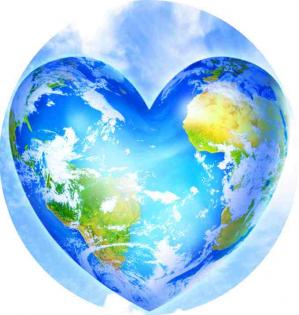
Since the first Earth Day 40 years ago, America has become a cleaner, safer, more beautiful place with less pollution, more pristine rivers, fewer people littering, and many endangered species rescued from the brink.
Founded in 1970 by U.S. Senator Gaylord Nelson of Wisconsin to be an “environmental teach-in”, 20 million people participated in the first Earth Day, which is now observed on April 22 each year by people worldwide. Classrooms of students young and old became active that day at 2,000 colleges and universities and roughly 10,000 primary and secondary schools.
Senator Nelson hoped that a grassroots outcry about environmental issues might prove to Washington politicians that Americans really cared about them. Plans for Earth Day so ballooned out of his capacity to organize that he needed a temporary office staffed with college student volunteers. Earth Day became a full-blown movement with autonomous groups organizing in cities large and small.
 As a senior at Snohomish High School in Washington, Cheryl Pearson organized a highway cleanup on that first Earth Day Day. Sandra Dodd of Albuquerque persuaded the principal of her high school to allow her to skip school that day to join a celebration 25 miles away on the Santa Fe Plaza. “There were speeches, there was singing. I still have the green arm band they gave me.”
As a senior at Snohomish High School in Washington, Cheryl Pearson organized a highway cleanup on that first Earth Day Day. Sandra Dodd of Albuquerque persuaded the principal of her high school to allow her to skip school that day to join a celebration 25 miles away on the Santa Fe Plaza. “There were speeches, there was singing. I still have the green arm band they gave me.”
On the 20th anniversary in 1990, 200 million people in 141 countries mobilized, giving a huge boost to recycling efforts worldwide and helped pave the way for the 1992 United Nations Earth Summit in Rio de Janeiro. Many cities now extend the observance of Earth Day events to an entire week.
Here is just a sampling of victories that arose out of that first “teach-in”:
40 Successes in 40 years of Earth Day
1970 – President Nixon created the Environmental Protection Agency (EPA) with a mission to protect the environment and public health.
1972 – The EPA banned DDT, a carcinogenic pesticide, featured in Rachel Carson’s 1962 book “Silent Spring.”
1972 – The Clean Water Act was passed at a time when only 40% of major rivers in the U.S. were safe enough for swimming. Today, about 70% are safe enough.
1973 – EPA began phasing out leaded gasoline, a source of air pollution, banning it fully by 1986.
1974– Congress passed the Safe Drinking Water Act, allowing EPA to regulate the quality of public drinking water.
1975 – The first use of the catalytic converter in automobile tailpipes helped to reduce noxious emissions required under the Clean Air Act. Since the first Earth Day, emissions from the most common air pollutants have decreased by about half, even while gross domestic product went up 195% and people increased their travel in cars by 178%.
1978 – The federal government banned chlorofluorocarbons (CFC) as propellants in aerosol cans because CFCs destroy the ozone layer, which protects the planet from harmful ultraviolet radiation.
1979 – EPA banned cancer-causing PCB production and use.
1980 – Congress created the Superfund to clean up hazardous waste sites, and require payment from polluting companies to finance clean up of the most hazardous sites.
1987 – The Montreal Protocol was signed by the US to protect the ozone layer by phasing out CFC’s. It became the most successful international agreement, having been signed by every member of the United Nations.
1988 – Congress passed the Sewage Ocean-dumping Ban against sewage sludge and industrial waste.
1990 – A new Clean Air Act Amendment required states to demonstrate progress in improving air quality and imposed the first acid rain controls.
1991 – Under an order from President George H.W. Bush, the US government started recycling on the federal level.
1992 – The ENERGY STAR program was first created by the U.S. Department of Energy to help us all save money — and conserve energy — through the use of energy efficient products. The program has since been adopted around the world.
1993 – President Clinton directed the federal government to use its $200 billion in annual purchasing power to buy recycled or greener products.
1994 – EPA launches its Brownfields Program to clean up abandoned, contaminated sites to return them to productive community use. One example: The city of Dallas, instead of looking for land in the suburbs to house a new stadium for its basketball team, decided to assist developers in cleaning up a 72-acre toxic mess at the city’s core. Where there once was arsenic and lead leftovers from a 100-year old city dump, the American Airlines center opened in 2001 serving sushi and sea bass to sports fans.
1999 – Smog in big cities had decreased at a tremendous rate: During the 1990’s Southern California’s number of days of high pollution decreased 100 percent. Los Angeles had nearly two hundred hazardous smog days per year in the 1970s but now experiences less than 25 each year.
1999 – President Bill Clinton announced new emissions standards for cars, sport utility vehicles, minivans and trucks, requiring them to be 77 to 95 percent cleaner in future years.
1999 – The largest unprotected grove of ancient redwoods in the world came under protection after Pacific Lumber agreed to accept federal and state funds totaling nearly a quarter billion dollars in exchange for preservation of the 10,000 acre Headwaters Forest.
2000 – Congress overwhelmingly approved $7.8 billion for the restoration of the Florida Everglades and undo a half-century of canal and levee-building. Support came from every sector: Democrats & Republicans, landowners & environmentalists, farmers & home builders.
2000 – Under President George W. Bush the EPA established new regulations requiring truck diesel engines and fuel to be more than 90 percent cleaner.
2001 – Australia ended commercial coral harvesting on the Great Barrier Reef to protect the world’s largest living reef formation.
2002 – WWF partnered with Brazil to launch the world’s largest tropical forest conservation program, carving out 12 years of strict preservation and the establishment of 62 million acres of new protected areas – a swath about the size of Wyoming.
2005 – The Kyoto Protocol became law around the world, a UN framework for nations to pledge to cut carbon emissions. At the end of 2009, 187 states had signed and ratified the protocol.
2006 – The Bush Administration encircled Hawaii with the world’s largest marine preserve, home to 7000 marine species, at least a quarter of which are found nowhere else. The huge sanctuary is larger than all U.S. National Parks combined, stretching the distance from Chicago to Florida.
2006 – 320 mayors of U.S. cities joined with 164 nations to embrace the Kyoto Accord setting targets that will lead to reduced greenhouse gas emissions by 2012.
2007 – One billion trees were planted by citizens around the world in just one year in the UN’s Billion Tree Campaign.
2007 – In New York City’s Hudson River, Shortnose sturgeon became the first fish to be resurrected from the endangered species list. More than 60,000 occupy the river, greater by four times than the number in 1970.
2007 – Dell became the first major computer firm to commit to becoming totally carbon neutral worldwide.
2008 – Europe achieved its goal of cutting pollution from coal-burning plants years ahead of schedule, reducing acid rain-causing sulphur dioxide by 65 percent since 1990.
2008 – The Black rhino population was up 20 percent in Kenya, after years of decline from poaching and habitat loss.
2008 – Americans are tossing less litter despite the fact that there are more people on the roads. “Experts estimate that deliberate trash-tossing has fallen about 2% per year since the mid-’70s.”
2008 – Bald eagles this year soared off the endangered species list after nearly four decades, their population climbing from a dismal count of just 417 nesting pairs in the continental United States in 1963 to more than 11,000 today.
2008 – The gorilla population rose 12 percent over the past decade in Uganda, while a 10-year strategic plan between Congo, Rwanda and Uganda pledged the continued recovery of the great ape. A new nature reserve in DRCongo became the world’s largest continuous protected area for Mountain Gorillas, larger than the state of Massachusetts.
2009 – The Obama Administration, environmentalists and the auto industry formally reach an agreement for the production of significantly more energy-efficient vehicles.
2009 – EPA ruled greenhouse gases to be dangerous to public health and the environment, and subject to Clean Air Act requirements.
2009 – Humpback whales may soon graduate from the endangered species list. Conservation has boosted population growth to 4-7 percent annually, leading to an estimated 19,000 animals, from fewer than 1,400 before the 1960’s ban on whaling.
2010 – A $2.2 billion five-year blueprint for rescuing the Great Lakes from toxic contamination and invasive species was launched by the Obama administration developed .
2010 – After roosting on the list of endangered species longer than most any other creature, the pelican was finally de-listed, with birds nationwide thriving.
2010 – The Earth lost fewer trees in the last decade, as global deforestation rates fell over the past ten years by more than 18 percent, according to the UN’s Global Forest Resources Assessment, which studied 233 countries.
To send this story to a friend or post on Facebook or Twitter, please use the FREE version of the story found in the MOST POPULAR News Section at GNN. That section contains all free stories!
https://www.goodnewsnetwork.org/most-popular/general/40-successes-on-earth-day.html



















